Subscribe to trusted local news
In a time of both misinformation and too much information, quality journalism is more crucial than ever. By subscribing, you can help us get the story right.
- Subscription costs less than £1 a week with an annual plan.
Already a subscriber? Log in here.
07
Jun
How a struggling church will find new life telling Harrogate's story

At a time when church closures are commonplace, stories of church resurrections can seem positively miraculous. Some are revived as flats, bars, climbing walls or places of worship for other faiths.
But from this summer, a church in Harrogate will serve in a different capacity – by telling the town's story.
West Park United Reformed Church is a dark landmark building at the end of Victoria Avenue – often passed by, but rarely capturing the attention. In fact, it’s been neglected for so long that its future was beginning to look worrying.
It was a situation that Stuart Holland was determined to do something about.
Mr Holland is a semi-retired chartered surveyor who carries out quinquennial inspections – or five-year checks – on buildings for the Church of England and United Reformed Church.

Stuart Holland.
He first got involved with the West Park church in 2017, when its main front stained-glass window was in danger of disintegrating.
He said:
The church was in a real state of disrepair, and its deterioration had accelerated during the covid lockdowns, because the heating was turned off.
My vision as the surveyor was to save this building from closing and not having a future. It could have been anything – a pub or a carpet warehouse – but it’s a building with a huge amount of history and I think it deserves something better.
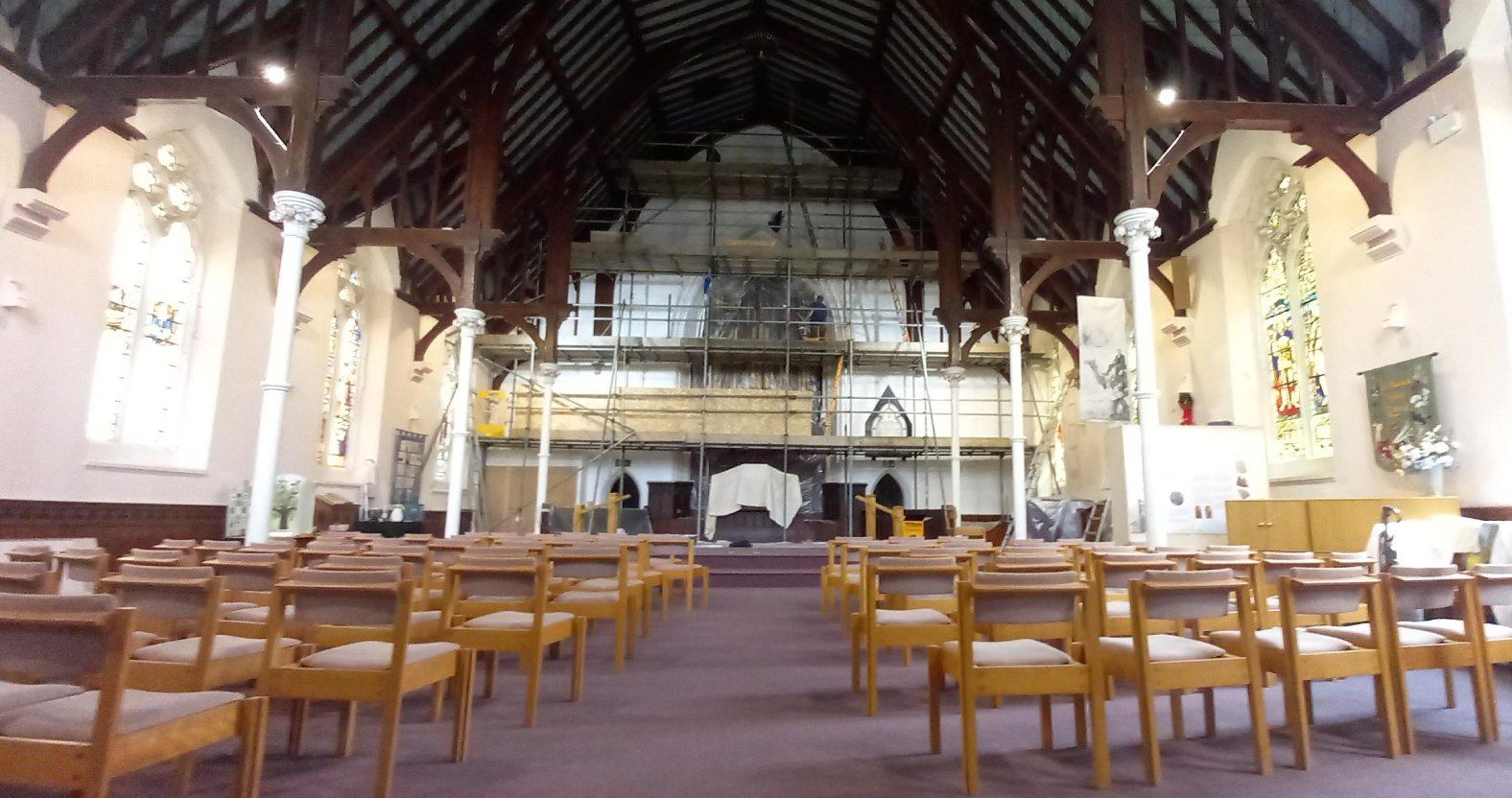
A lot of work has been done to weatherproof the building.
Mr Holland was formerly chair of Harrogate Civic Society, which was actively involved in the 2022 launch Wells & Swells, the late Malcolm Neesam’s weighty, two-volume history of the golden age of Harrogate spa from 1842 to 1923. The event was attended by a very ill Mr Neesam, who died just four months later.
Mr Holland said:
A group of us were having lunch one day, discussing how we could ensure that Malcolm’s work lives on and is known about. Someone said, ‘What we need to do is tell the Harrogate story, but we need a place to do it’. I said, ‘I think I know a building’ – and the church said yes.
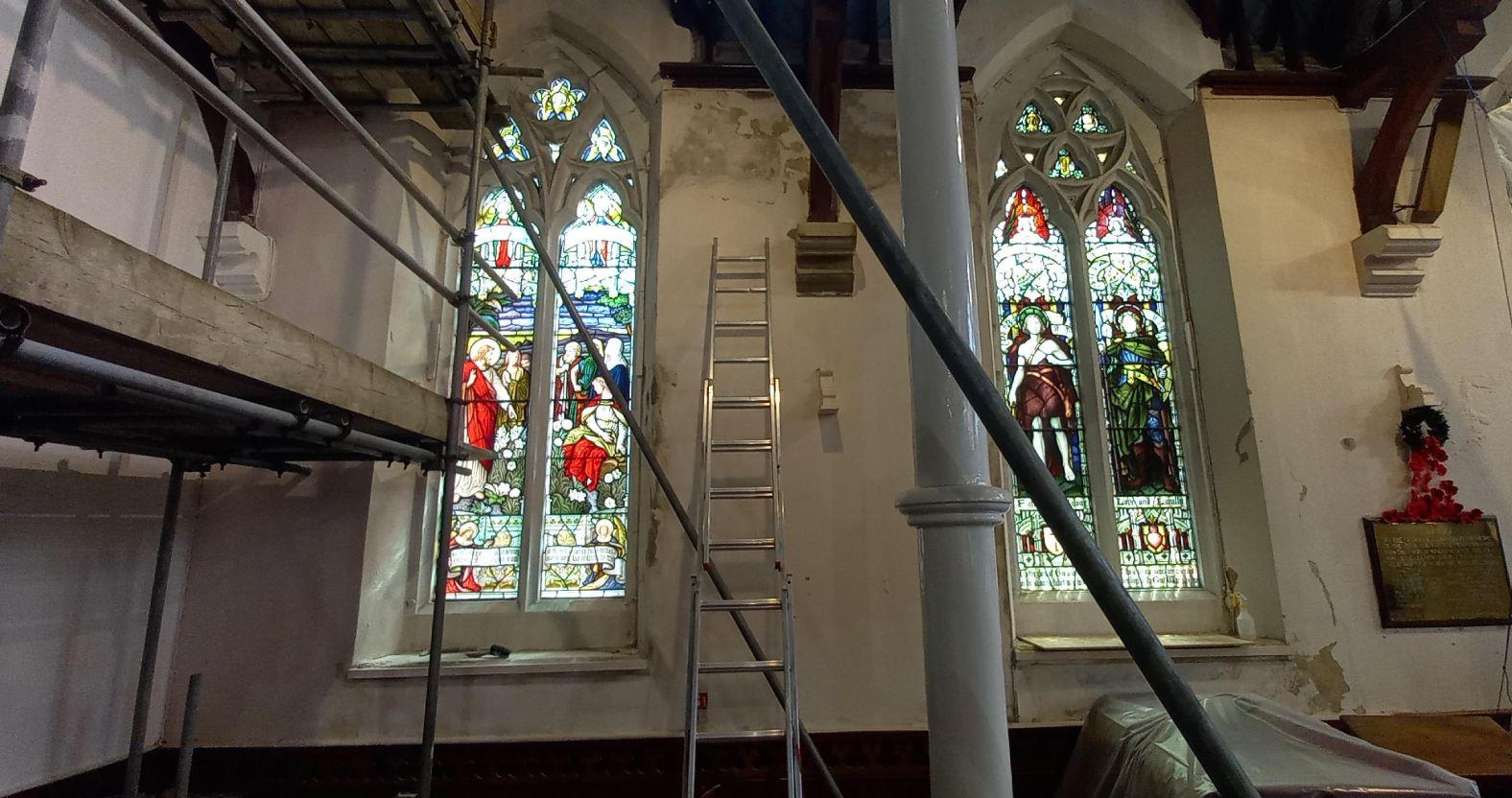
The roof, windows and walls have all needed attention.
In fact, the church also stumped up £75,000 for renovations that will make the project possible, and Harrogate Spring Water is also providing funding, although the amount has not been disclosed.
Under the plans, which have been underway for a couple of years, the congregation, now only numbering about 30 people, will hold services in the newly refurbished Victoria Room at the rear of the building.
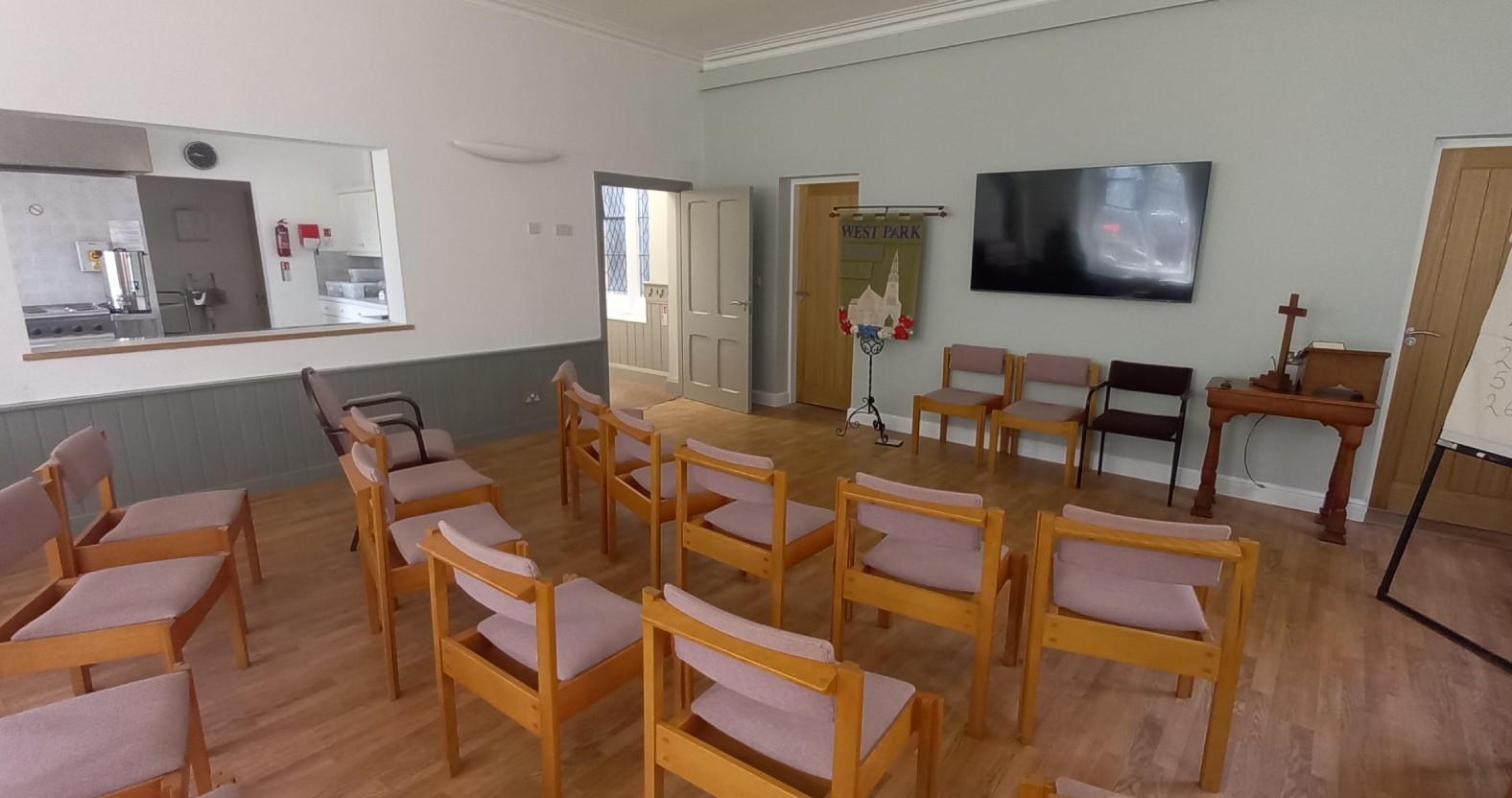
The Victoria Room.
The Stray Room at the front of the church will become a coffee shop, and the main body of the church will become a multifunctional space that can be used for community events.
But most of the time, its huge space will serve as a home for The Harrogate Story.
This will be told across a series of panels detailing the history of the spa, with text and images drawn from Mr Neesam's work and compiled by historian Dr Paul Jennings, writer and historian Rebecca Evans and Walker/Neesam Archive custodian Simon Kent.
A large TV on the chancel (the ‘stage’ area at the front) will play a five-minute history of Harrogate on a loop.
The information will be displayed on specially-made panels mounted on casters so they can be folded flat against the walls on the key dates in the church calendar when major services are held and the congregation reclaims the space, or when the church is used for concerts.

The scaffolding is due to come down by mid-June.
The scaffolding currently spread across one of the interior walls will be taken down this week, and a soft opening of The Harrogate Story is scheduled for early July.
Mr Holland said:
It will start with the geology of the place – what makes it special – and will go on to the discovery of the waters and the development of the spa.
It will be a living tribute to the work of Harrogate’s great historian.
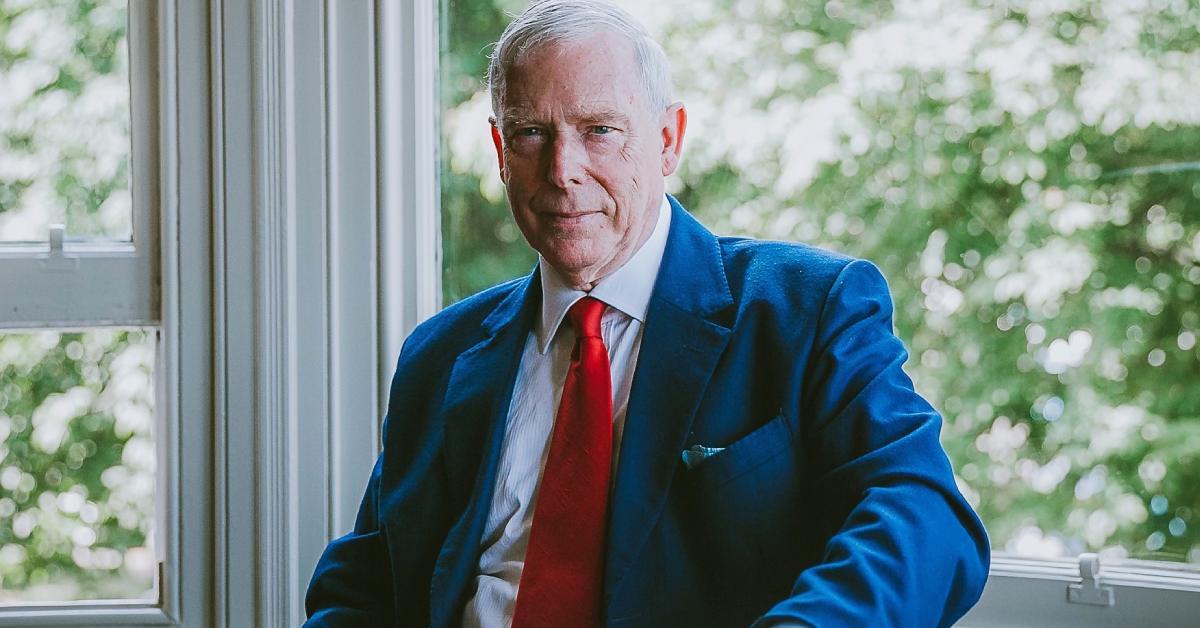
The late Malcolm Neesam.
This all nearly didn't happen. First, there was all the damage to the fabric of the building to repair. So the stained-glass window has been fixed, the roof leaks have been stopped, and two winters of heating from replaced boilers have dried the place out.
But a few years ago, the church authorities – faced with such a money-pit – flirted with an idea that would have found another use for the building as a way to stem the cash haemorrhage.
Planning permission was granted to create 12 flats in the upstairs portion of the building and above the adjoining caretaker’s cottage, but in the end, the church decided against it.
Mr Holland said:
It turned out that dividing the building into two was fraught with difficulty. Although the organ is in the church, the bellows that provide its air are in the other half.
Also, the gas, electric and sewerage are all connected at one end, so we would have had to bring all the services into the church end of the building, at huge financial cost.
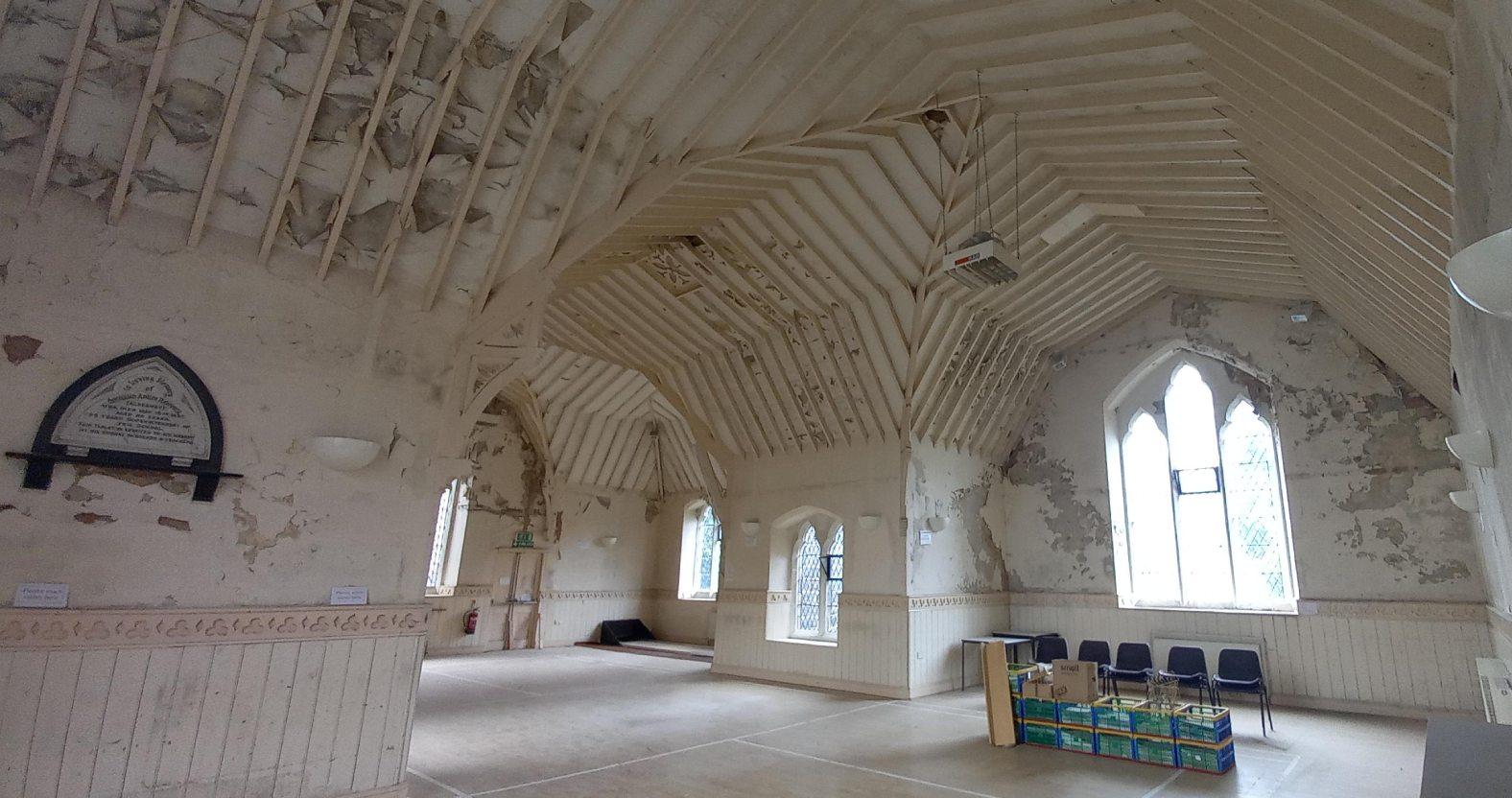
The disused upstairs school room where the flats would have been.
With hindsight, it was all for the best, at least for Mr Holland and his small band of volunteers who are bringing The Harrogate Story to life.
In a way, he says, the project will also provide a pleasing sense of circularity:
The church was built in 1862 – the year the railways came to Harrogate – as a place of worship for visitors to the town, and was designed to hold 700 people. The Harrogate Story brings us full circle and reflects what this church was all about: welcoming visitors.
I also think we need something like this. When visitors come to this town, they eat, drink, go shopping, but what else is there to do, especially in wet weather?
My aim was to save this building, and to do that, it needed a purpose. I hope The Harrogate Story does that.
2